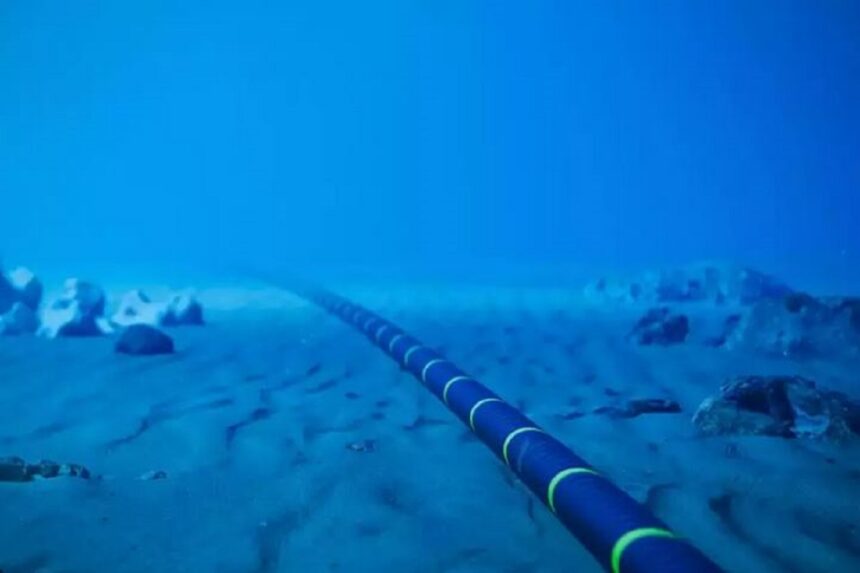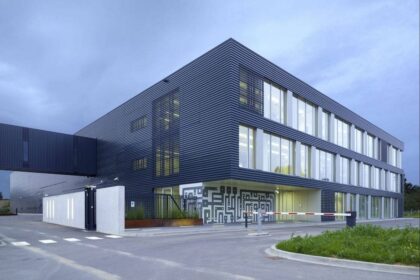In an effort to enhance connectivity and bolster their data center industries, Singapore and Vietnam are exploring the development of new subsea cables. These ambitious projects are poised to redefine the region’s digital infrastructure, with both nations eyeing improved bandwidth and resilience in their networks.
Keppel and Sovico Group Leading the Charge
Singaporean asset manager Keppel and Vietnamese conglomerate Sovico Group are at the forefront of discussions surrounding the establishment of new subsea cables between the two countries. These cables are intended to serve the growing demand for reliable, high-speed data transfer crucial to the expansion of the data center sector.
According to a report from Reuters, a direct Vietnam-Singapore cable is one of the key proposals under consideration. The initial estimated cost for this cable is around $150 million, though specific technical details remain undisclosed.
An Ambitious Vision for a Regional Cable Network
Keppel is pushing for a more extensive approach to the project. Instead of limiting the cable’s reach to a direct Vietnam-Singapore link, the company envisions a broader subsea cable network that would involve a consortium of investors. This larger project may include branches extending to Japan and other nations, creating a robust and diversified network across the region.
The discussions are still in the preliminary stages, and no formal agreements have been made at this point. Keppel has refrained from commenting on the project details, and both companies are likely awaiting further developments before making any official announcements.
Strategic Concerns Over Chinese Contractors
One of the notable aspects of the discussions is the exclusion of Chinese contractors from the subsea cable project. Sources familiar with the matter revealed that Sovico has been briefed by U.S. officials about the potential risks of using Chinese firms, such as HMN Technologies, in the construction of subsea cables. This caution stems from geopolitical concerns, particularly regarding cybersecurity and the influence of Chinese firms in critical infrastructure projects.
As part of the ongoing talks, Sovico executives reportedly discussed the cable project in a meeting with Vietnam’s Prime Minister Pham Minh Chinh last month. While specifics of the meeting were not disclosed, it is clear that the Vietnamese government is keen on supporting initiatives that enhance the nation’s digital connectivity and data center capabilities.
Vietnam’s Need for Expanded Subsea Connectivity
At present, Vietnam is connected to five subsea cables: AAE-1, AAG, APG, and TGN-IA. However, the country faced significant disruptions earlier this year, with three of these cables experiencing outages. As Vietnam continues to develop its digital infrastructure, the demand for more reliable and resilient subsea cables has become increasingly urgent.
The Vietnamese government is already planning to add ten new submarine cables by 2030 to further strengthen the nation’s connectivity and ensure uninterrupted service. This strategic push aligns with the growing focus on data center development in Vietnam, which has seen an influx of international investment.
Keppel’s Role in Strengthening Data Center Infrastructure
Keppel, a key player in the project, is no stranger to the data center sector. Recently, the company made headlines by agreeing to purchase an AI-ready data center facility in Japan. This acquisition reflects Keppel’s broader strategy to expand its footprint in the global data center market, capitalizing on the rise of edge computing, artificial intelligence, and cloud solutions.
By participating in the subsea cable project with Sovico, Keppel is positioning itself as a critical enabler of the digital economy in Southeast Asia. The new cables would not only improve connectivity for data centers in Vietnam but also enhance the region’s overall digital infrastructure, attracting more investment and facilitating business growth.
The Bigger Picture: Southeast Asia’s Digital Future
The proposed subsea cable projects are part of a broader trend in Southeast Asia, where nations are rapidly developing digital infrastructure to support the ever-increasing demand for data. With the rise of cloud services, big data analytics, and AI-driven solutions, the need for robust, high-capacity connectivity has never been greater.
In this context, subsea cables play a crucial role in connecting data centers and facilitating the seamless flow of data across borders. By investing in these projects, Singapore, Vietnam, and other countries in the region aim to position themselves as global leaders in the digital economy.
Key Players and Their Roles in the Project
- Keppel: As a leading asset manager and developer of data centers, Keppel brings its extensive expertise in infrastructure development to the project. The company’s focus on expanding its data center portfolio aligns with the need for improved regional connectivity.
- Sovico Group: A Vietnamese conglomerate, Sovico has a strong presence in various sectors, including energy and real estate. Its collaboration with Keppel is seen as a strategic move to enhance Vietnam’s digital infrastructure and support the nation’s growing data center industry.
Vietnam’s Subsea Cable Plans and Government Support
The Vietnamese government’s support for subsea cable projects is a testament to its commitment to building a robust digital economy. By planning to add ten new submarine cables by 2030, Vietnam aims to significantly enhance its global connectivity and improve the resilience of its data networks.
This vision aligns with broader regional initiatives to create a seamless digital ecosystem, connecting Southeast Asia with the rest of the world. For companies like Keppel and Sovico, these projects offer an opportunity to play a pivotal role in shaping the future of digital connectivity in the region.
Frequently Asked Questions (FAQs)
What is the cost of the proposed Vietnam-Singapore subsea cable?
The cost of the direct Vietnam-Singapore cable is estimated to be around $150 million. However, if the more ambitious regional cable network is pursued, the overall cost could be significantly higher.
Why are Chinese contractors excluded from the subsea cable project?
The exclusion of Chinese contractors, such as HMN Technologies, stems from concerns over cybersecurity and geopolitical risks. U.S. officials have advised Sovico against involving Chinese firms in critical infrastructure projects.
How many subsea cables does Vietnam currently have?
Vietnam is currently connected to five subsea cables: AAE-1, AAG, APG, and TGN-IA. However, the country faced outages on three of these cables earlier this year.
What are the benefits of the new subsea cable projects for data centers?
The new subsea cables will improve connectivity, enhance data transfer speeds, and provide greater resilience, all of which are critical for the growth of data centers in Vietnam and the broader Southeast Asia region.
How does Keppel’s involvement impact the region’s data center industry?
Keppel’s expertise in data center development and its recent acquisition of an AI-ready facility in Japan position the company as a key player in expanding Southeast Asia’s digital infrastructure. The new subsea cables will strengthen regional connectivity and attract more investment in the data center sector.



















